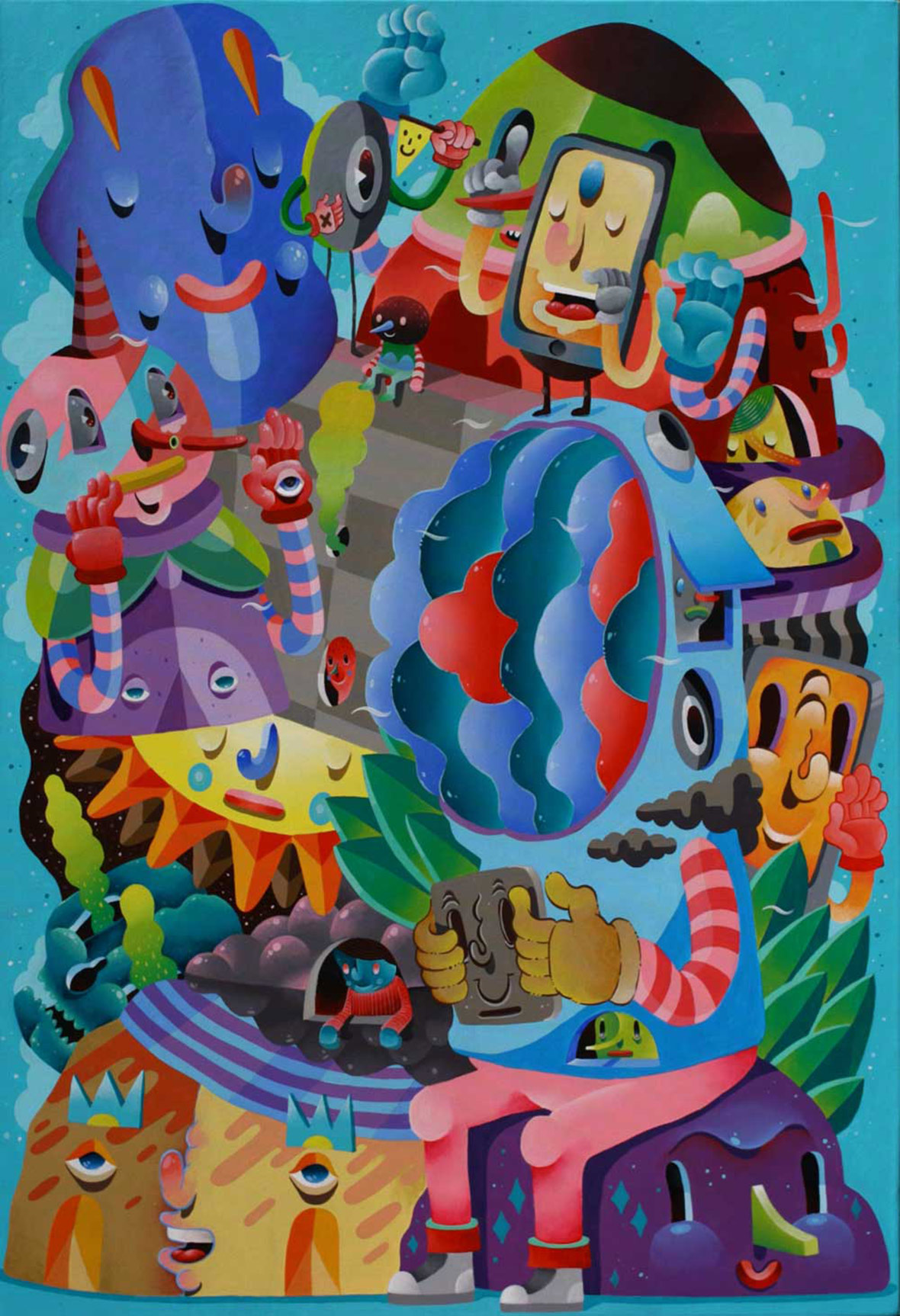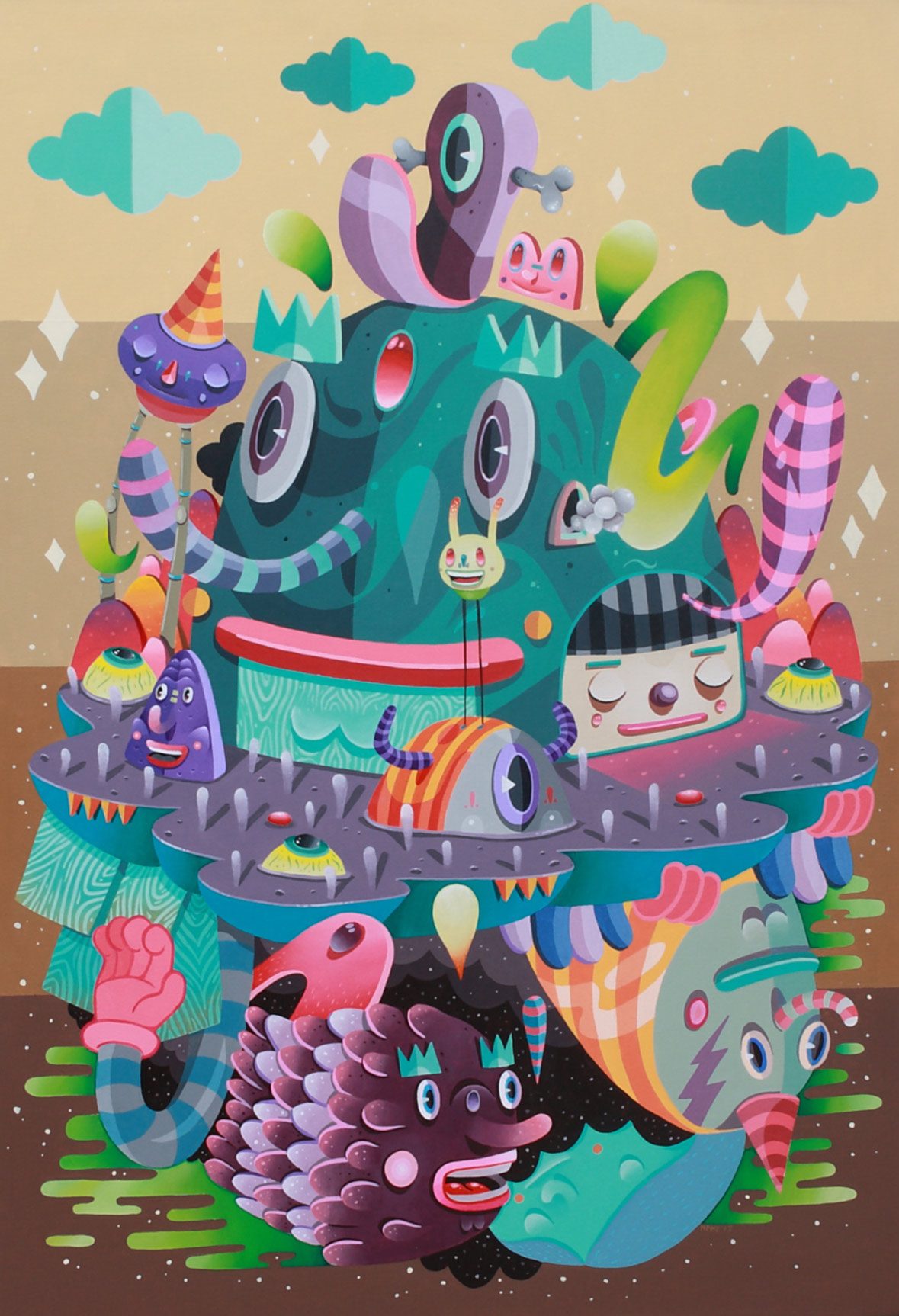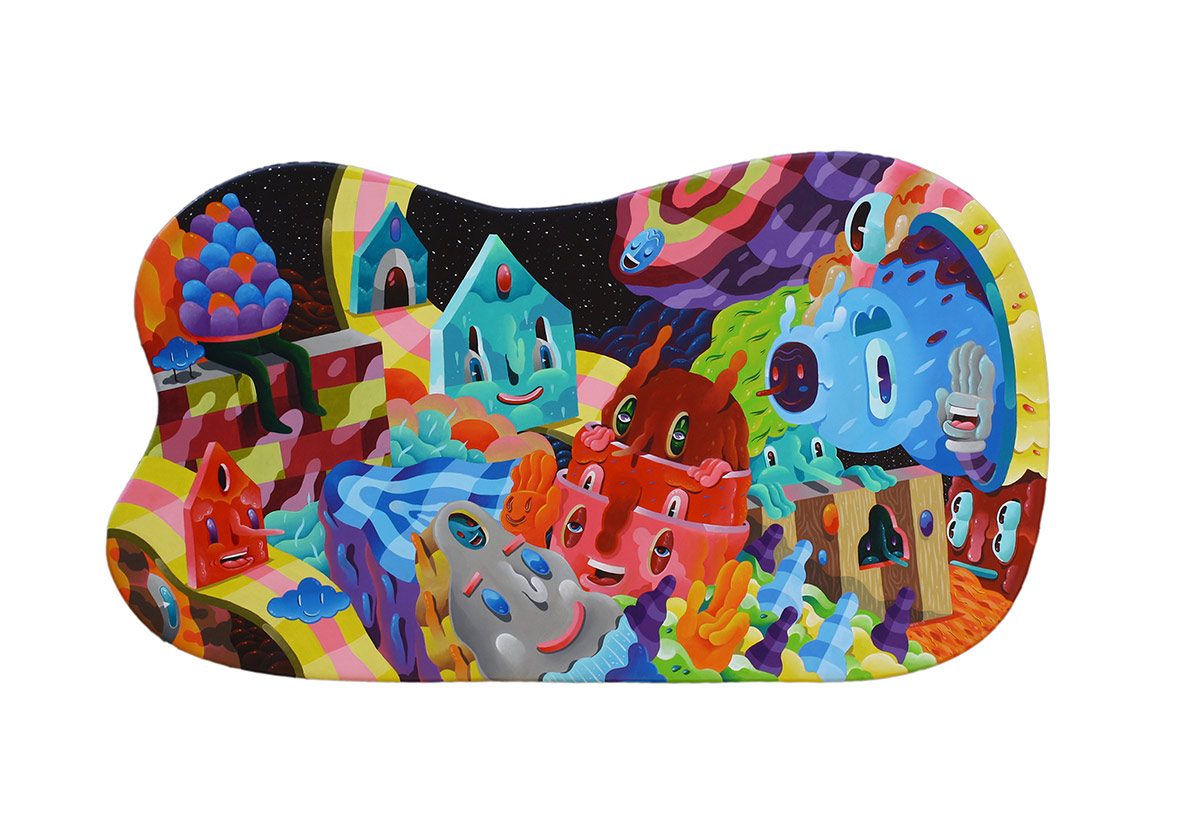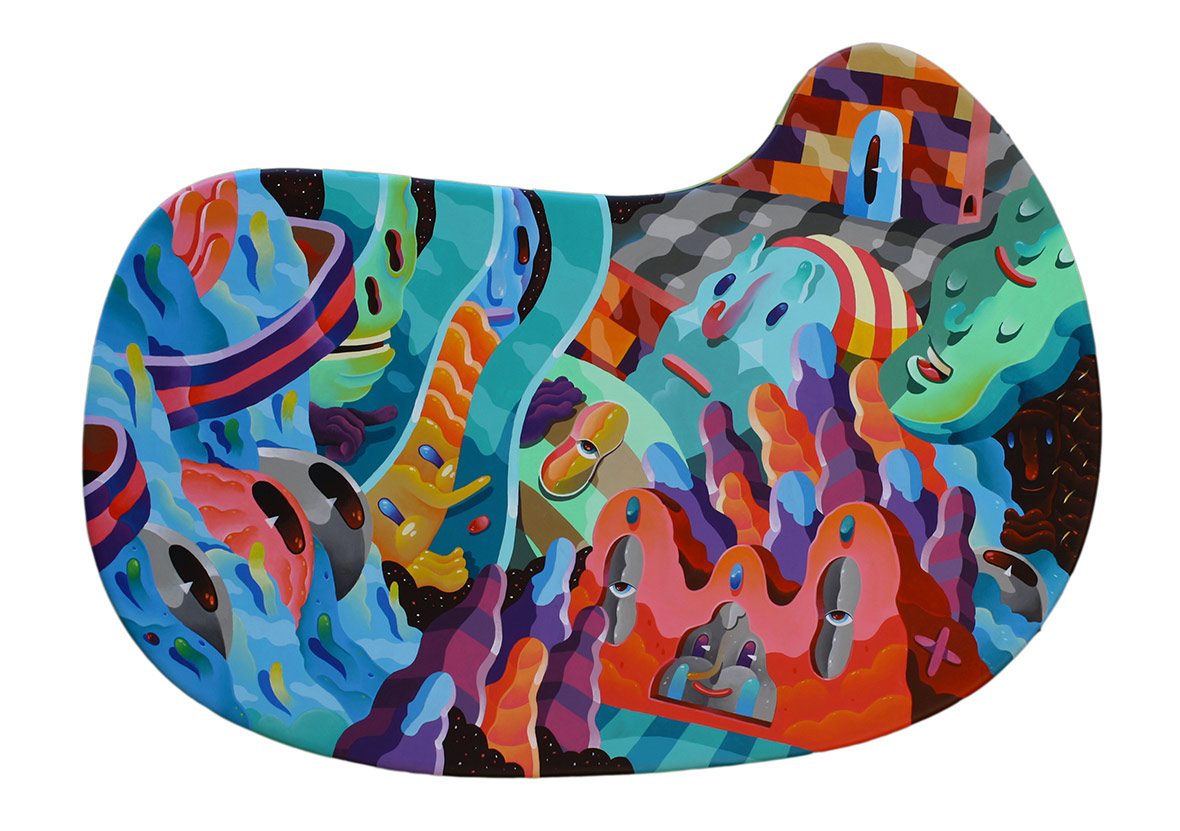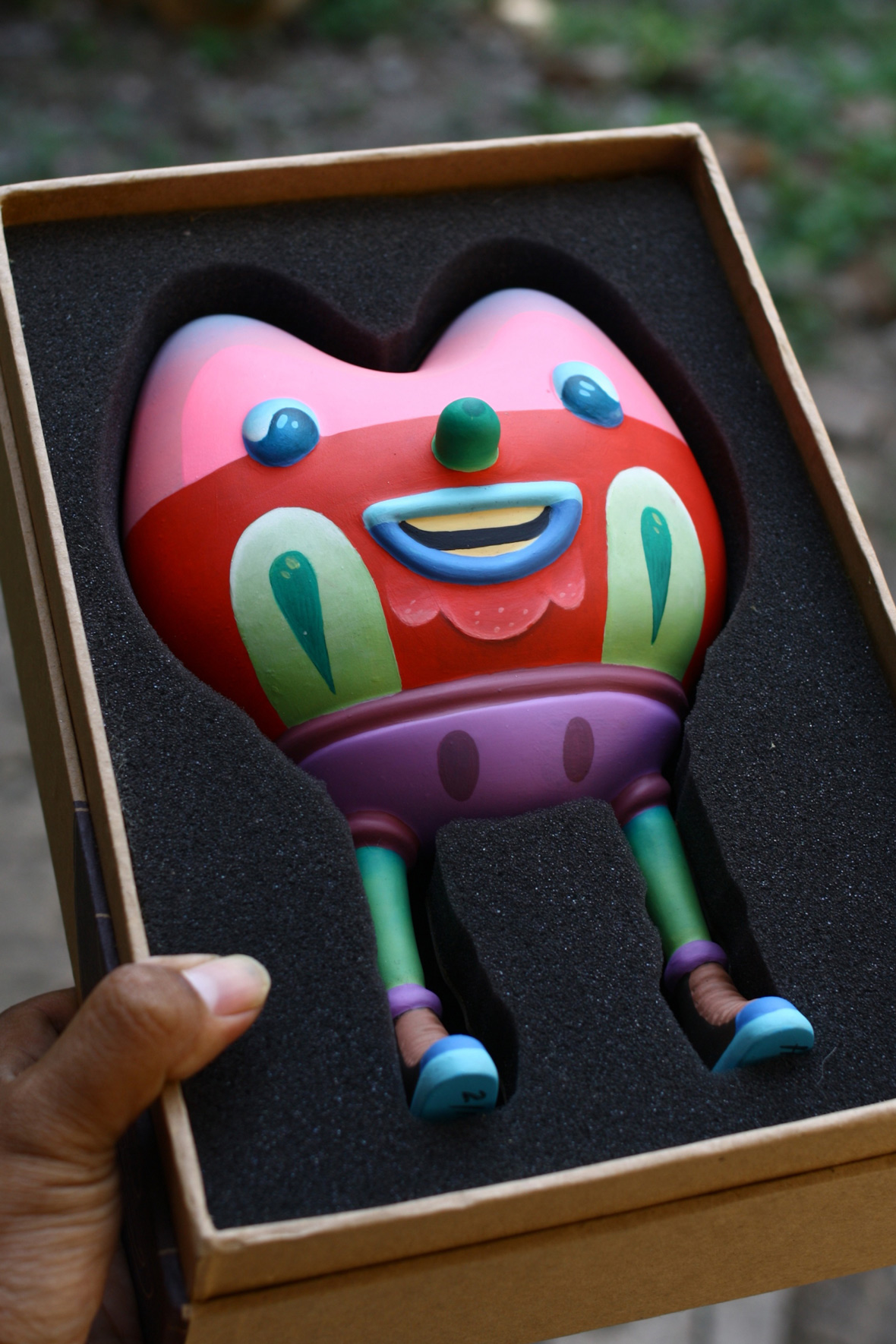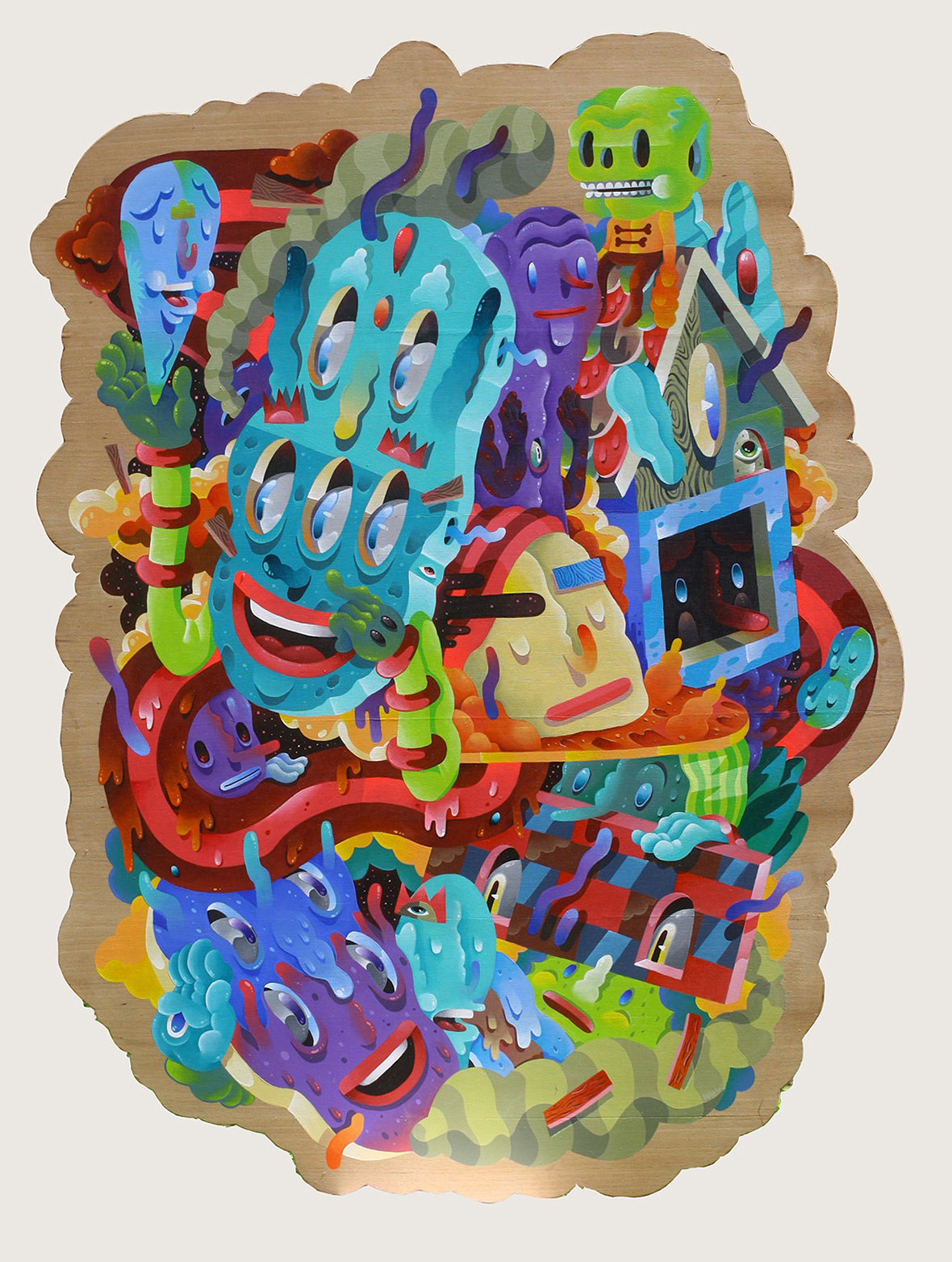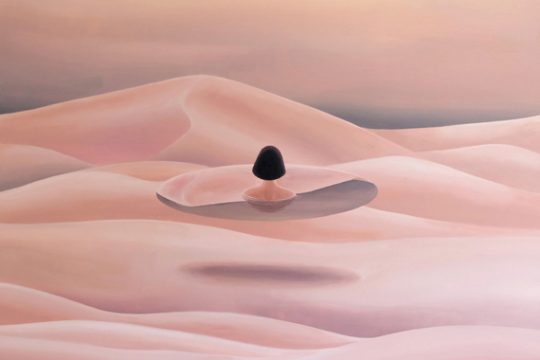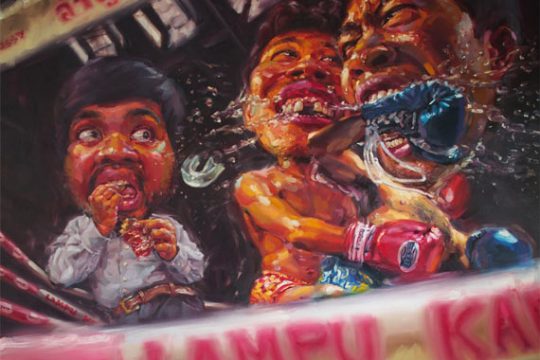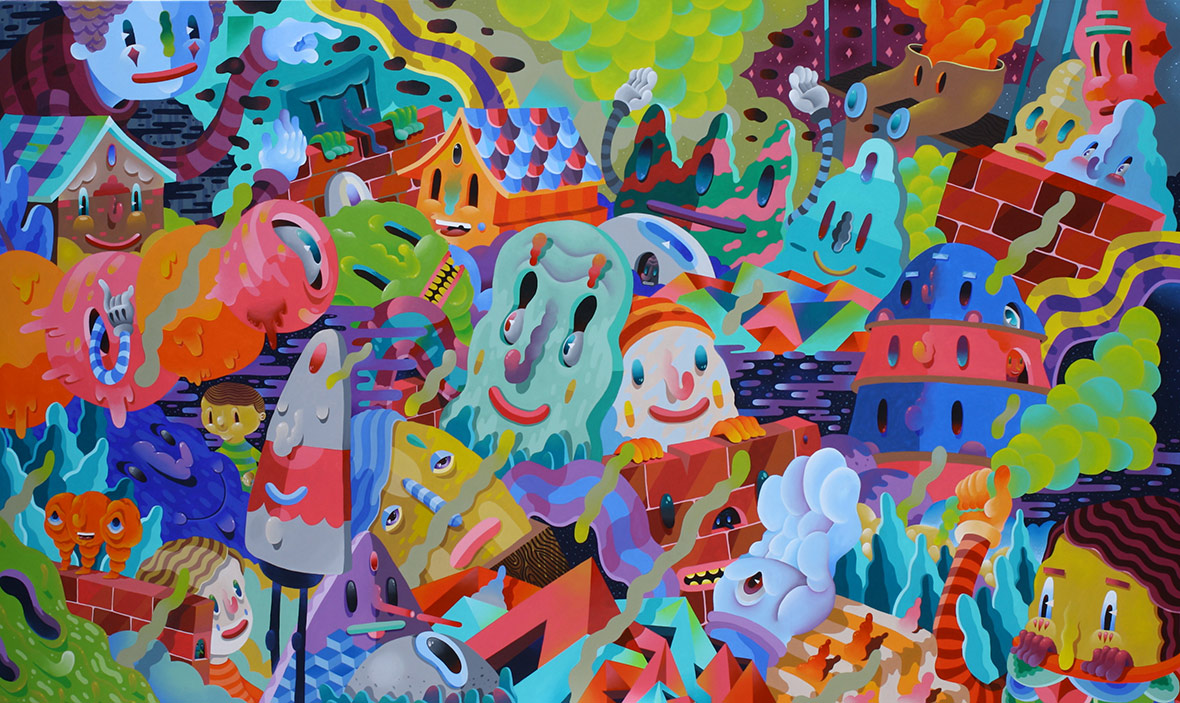
Hendra Harsono is an Indonesian artist creating nonsensical worlds populated with child-like, zany characters. Through his paintings, illustrations, and sculptures, he shows his eye for the absurd, incorporating colorful motifs drawn from both Indonesia and the larger world.
Floating homes, long-legged jelly-like creatures, magical brick walls, and many other absurd creatures cover his canvases. His figures seem like something out of a Hayao Miyazaki film, only more psychedelic, and despite the chaos around them, they have a look of contentment or indifference.
印尼艺术家 Hendra Harson 创造的奇妙世界里,充满了如孩童般滑稽的角色。他融合来自印度尼西亚和世界各地的多彩图案,通过绘画、插图和雕塑作品,向世人展示自己眼中荒诞的视线。
飘浮的房子、果冻形状的长脚怪物、拥有魔法的砖墙和其他许多奇妙的生物充斥在他的画布。Hendra 笔下的角色像是来自宫崎骏的电影,但不同的是,他的风格更迷幻。尽管画面里一片混乱,画中的角色却流露着称心满足或毫不留意的面孔。
Born in 1983, Harsono, or Hehe, as he’s known in the arts scene, grew up in the agitated period between the late-1980s and 1990s. It was a time when foreign culture, mostly from the U.S. and Japan, began to spread throughout Indonesia, as well as a time of intense—and sometimes violent—economic, social, and political turmoil.
“I was fortunate to live well and could enjoy my childhood reading manga, playing video games, and collecting action figures,” says Hehe. “But life was prosperous and anxious at the same time.”
Hehe studied at the Indonesian Art Institute of Yogyakarta. At first, he mostly doodled with pen and paper, since these were the cheapest materials he could find, and spent endless hours in internet cafes. He was interested in how toys, graffiti, and illustration could add to the fine arts.
Hendra 在艺术圈里又以 Hehe 的名字为人熟知。他出生于 1983 年,成长于 80 年代末和 90 年代的动荡时期。在那个年代,以美国和日本文化为主的外国文化刚开始在印尼传播;同时,那又是一个局势紧张的年代,甚至是暴力的年代,充满着经济、社会和政治动荡。
“我很幸运能过上很好的生活,看漫画、玩电动游戏、收集手办模型让我的童年非常令人享受。但这样的生活往往也是丰富与焦虑并存的。”Hehe 说道。
Hehe 曾就读于日惹印尼艺术学院( Indonesian Art Institute of Yogyakarta)。起初,他把大部分功夫花在了简笔画上,因为纸、笔是他能找到最便宜的创作材料,此外他还喜欢在网吧里消磨时光。如何将玩具、涂鸦和插画融入进纯艺中,是他在那个时候最感兴趣的事情。
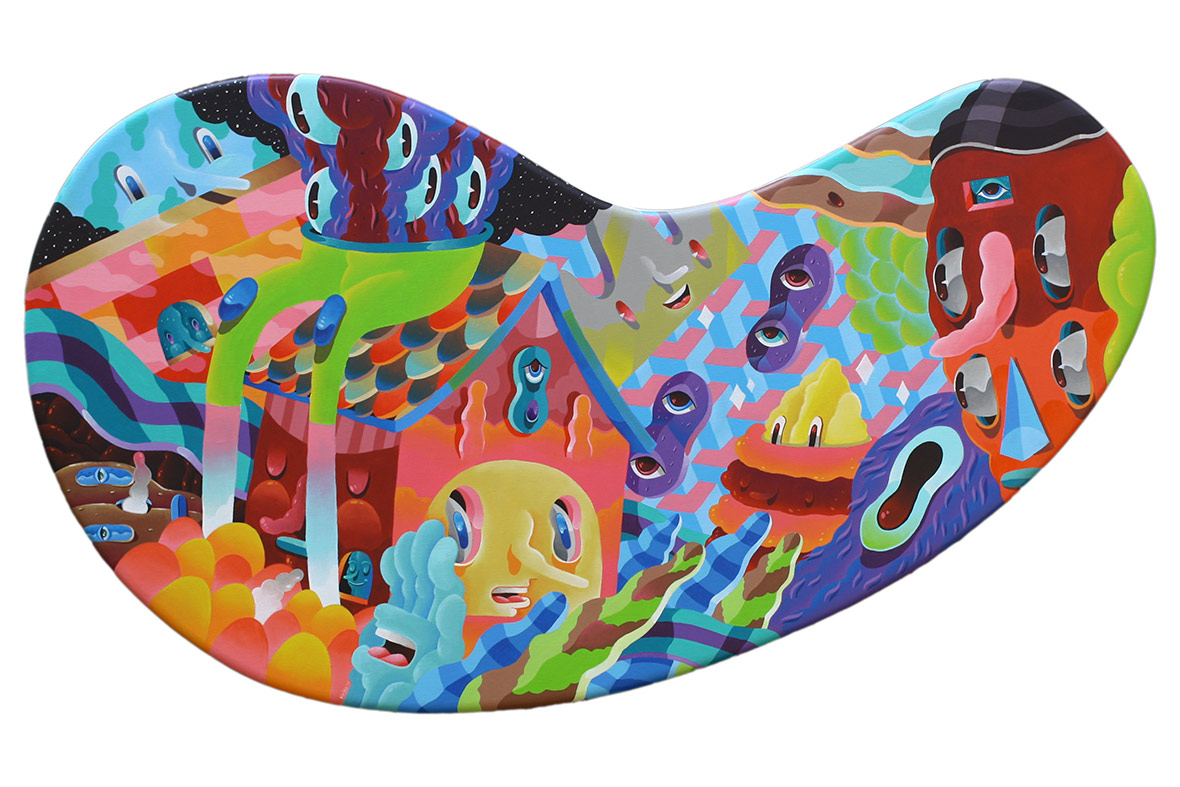
Today, more than fifteen years later, he works in a variety of different media. He prefers canvas, and he often paints large-scale works up to three meters wide. Yet he still feels he has much to learn. “If the canvas is the artist’s playroom, then I haven’t explored all its corners,” he says. Hehe also works with ink on paper and cardboard, with acrylic on wood boards, and automotive paints on brass plates. His corrugated cardboard works are especially appealing since they preserve the labels and tags of their previous lives.
15 年后的今天,他的创作媒介已经十分多样化。他最喜欢在画布上创作,经常画出宽达 3 米的大幅作品。然而,他仍然觉得自己有很多东西需要学习。“如果说画布是艺术家的游戏室,那么它的所有棱角还需要我去摸索。”他说道。此外,Hehe 也会利用油墨和纸或硬纸板、丙烯酸颜料和模板,或是汽车涂料和黄铜板的搭配进行创作。他的瓦楞纸板作品尤其有趣,通常这些作品往往会保留瓦楞纸板原本的标签和标记。
“Everything starts with a scribble. Then it’s a matter of determining if it’s a painting or a three-dimensional thing. Every medium has its language,” he says. Hehe has also brought his weird characters into the third dimension, in acrylic and paper sculptures. Cartoons and urban toys have always been his major inspirations: in fact, his style could be described as cartoons refracted through his memories and emotions. “Different objects have different meanings depending on the context,” he says. “What I find interesting is bringing them to life and making them communicate as we do.”
“一切都是从乱涂乱画开始的。然后,我会决定到底想让它成为一幅画,还是制作成三维立体作品。每种媒介都有自己的特色。”他说。Hehe 还将那些奇怪的角色制成三维的丙烯酸作品和纸雕。动漫和城市玩具一直是他的主要灵感之源:事实上,他的艺术作品更像是通过记忆和情感投映而成的动画片。“根据不同的情境,不同的事物会有不同的含义。”他说道,“如果能赋予它们生命力,并能像人类一样交流起来,那一定是一件非常有趣的事。”

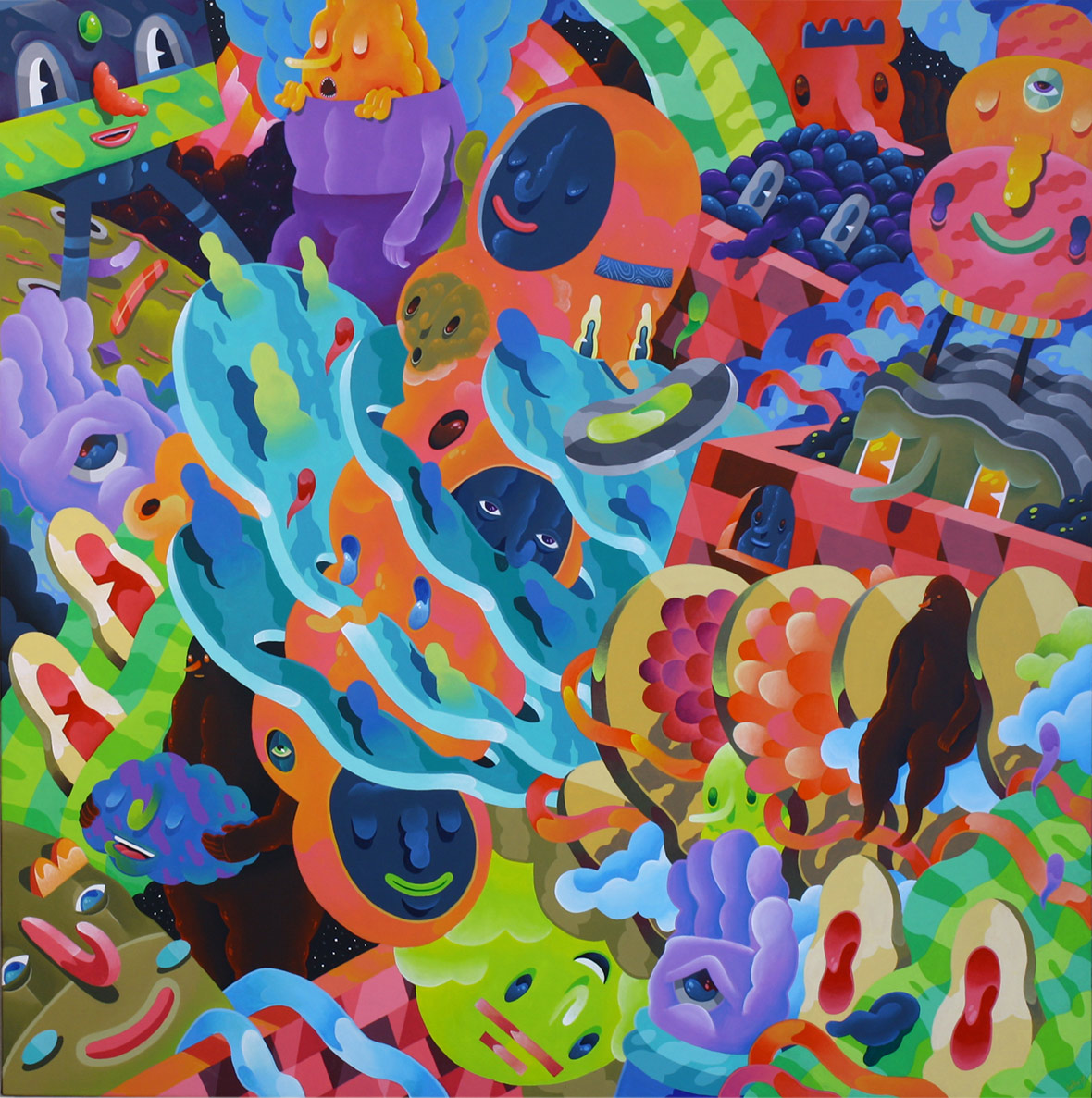
Occasionally, Hehe creates works with a specific message in mind. For instance, the hand with a mouth and eyes represents a tool to propagate dubious information in the age of social media. Another character has no hands or arms as if to say that some things are simply out of reach. Another recurrent theme is a floating home with large eyes, which he sees as a double for his studio, the place from which he observes the world outside.
Hehe 在创作时偶尔会预先确定作品主题。例如,一只有嘴和眼睛的手掌寓意社交媒体时代用来传播信息的工具;一个没有双手的角色仿佛在说,有些事情只能望尘莫及;而另一个经常出现的主题则是一幢有着大眼睛的飘浮房子,代表着他的工作室,那里是他洞察外面世界的地方。
Despite his global interests, Hehe can’t help adding nuances to his work that are specific to Indonesia. A patient eye can find many references to local textures, patterns, and colors. Everywhere there’s a sense of profusion and confusion. “The world I create is the same world we live in now,” he says. “The only difference is that I add colors and imagination to it.”
Hehe’s work is currently on show in the group exhibition Use Your Illusion, at Edwin’s Gallery in Jakarta. The show will continue until February 16.
尽管他对世界各地的文化都很感兴趣,但 Hehe 尤其希望用本土特色为自己的作品增添细节。他的作品中,你会看到病人的眼中充斥着印尼特色的纹理、图案和颜色,带着一种缤纷、混乱的感觉。“我笔下的世界与我们的生活环境是一样的。”他说,“唯一的区别是,我在这个世界里留下了更多色彩和想象力。”
目前,Hehe 的作品正在雅加达的 Edwins 画廊群展《Use Your Illusion》(发挥你的幻想力)中展出。此次展览将持续到 2 月 16 日。
Like our stories? Follow us on Facebook and Instagram.
Website: www.hendrahehe.com
Instagram: @heheworks
Contributor: Tomás Pinheiro
Chinese Translation: Olivia Li

